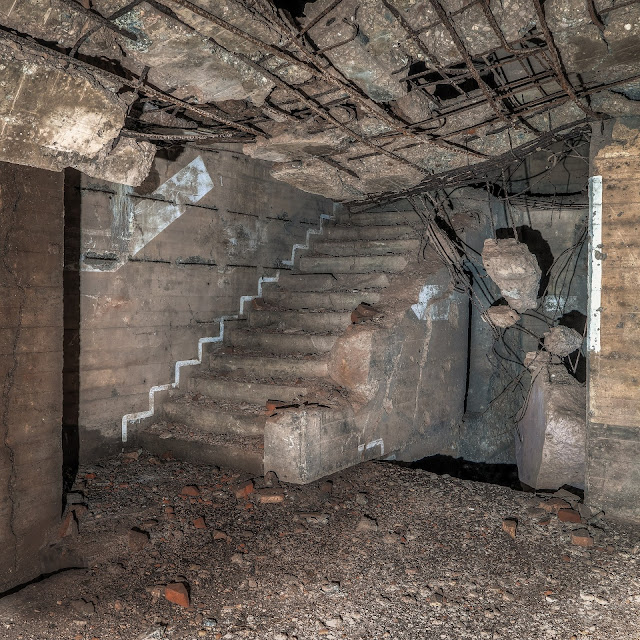In November 2019, I received a tip that one of the remaining high-rise bunkers from the Second World War in my home town was open. Apparently someone - presumably a city employee who had checked the condition - had not properly relocked the thick padlock.
So I set off after work. It was raining heavily and my wife was kind enough to drive me the short distance and then wait for me in the parking lot. The bunker is in the middle of a residential area, so I was able to operate under cover of darkness without being seen.
The door was indeed open, and the lock was only hanging loosely in front of it - but in such a way that it was not immediately visible, which is probably why nobody had noticed it.
Through the steel door, I got inside the massive building.
The basement was completely under water, so I couldn't enter it. The condition inside is not good. The British occupying forces had blown up the bunker after the war - but from the inside, so that the massive outer walls remained standing and the residential buildings in the vicinity were not affected.
On the pictures you can see what the detonation did inside: Stairs have collapsed, walls are full of holes and the thick reinforced concrete ceilings are hanging down in pieces. All in all, the picture was somewhat surreal.
For safety reasons, I didn't venture too far into the upper floors. What's more, after about 15 minutes I came across bats that had apparently chosen the bunker as their winter quarters.
This was the time for me to retreat, as I respect the bat protection period and leave buildings as soon as it becomes clear that they are a bat hibernation site.
The excursion was very interesting, because you don't get to see bunkers this big from the Second World War every day - especially not if they are in a dangerous condition.








No comments:
Post a Comment